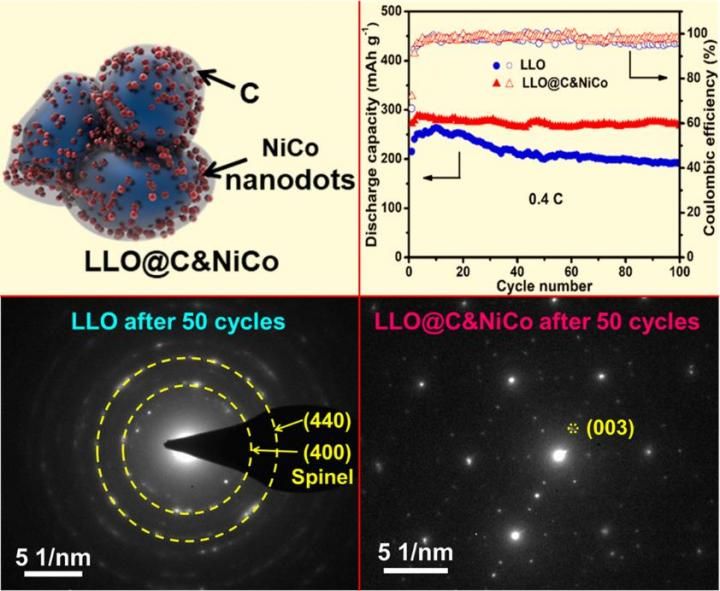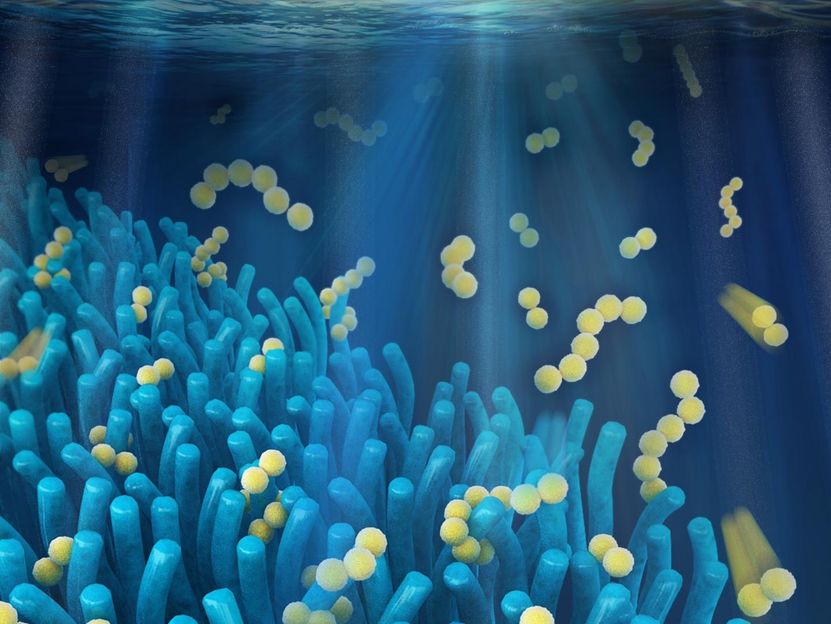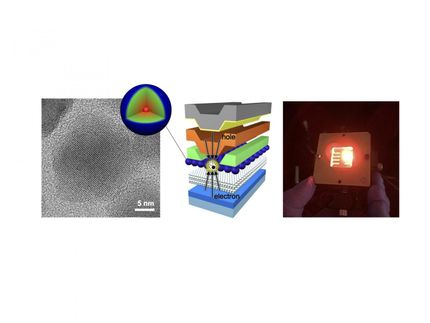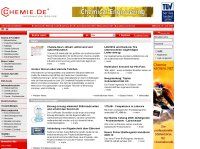Let there be light: Teaching magnets to do more than just stick around
That palm tree magnet commemorating your last vacation is programmed for a simple function – to stick to your refrigerator. Similarly, semiconductors are programmed to convey bits of information small and large, processing information on your computer or cell phone. Scientists are working to coax those semiconductors to be more than conveyers, to actually perform some functions like magnets, such as data recording and electronic control. So far most of those effects could only be achieved at very cold temperatures: minus 260 degrees Celsius, likely too cold for most computer users.
However, researchers led by a University of Washington chemist report in Science that they have been able to train tiny semiconductor crystals, called nanocrystals or quantum dots, to display new magnetic functions at room temperature using light as a trigger.
Silicon-based semiconductor chips incorporate tiny transistors that manipulate electrons based on their charges. Scientists also are working on ways to use electricity to manipulate the electrons' magnetism, referred to as "spin," but are still searching for the breakthrough that will allow "spintronics" to function at room temperature without losing large amounts of the capability they have at frigid temperatures. The team led by Daniel Gamelin, a UW chemistry professor, has found a way to use photons to manipulate the magnetism of semiconductor nanocrystals efficiently, even up to room temperature.
"This provides a completely new approach to microelectronics, if you can use spin instead of charge to process information and use photons to manipulate that process," Gamelin said. "It opens the door to materials that store information and perform logic functions at the same time without the need for super cooling."
The team used nanocrystals of a cadmium-selenium semiconductor called cadmium selenide, but replaced some nonmagnetic cadmium ions with magnetic manganese ions. The crystals, smaller than 10 nanometers across, were then suspended in a colloid solution.
Beams of photons were used to align all of the manganese ions' spins, creating magnetic fields as much as 500 times more powerful than in the same semiconductor material without manganese. The magnetic effects were strongest at low temperatures, but remained remarkably strong up to room temperature, Gamelin said. Besides Gamelin, authors of the Science paper are Rémi Beaulac and Paul Archer of the UW and Lars Schneider and Gerd Bacher of the University of Duisburg-Essen in Germany.
In a second paper published in the Nature Nanotechnology, Gamelin's group reported related effects in semiconductor nanocrystals made of zinc oxide but also containing small amounts of manganese impurities. With zinc oxide, photons acted more as an on-off switch – once photons altered the zinc oxide's magnetism, the photon stream could be removed and the effect remained in place until another stimulus was applied to turn the effect off again. Besides Gamelin, authors of the Nature Nanotechnology paper are Stefan Ochsenbein, Yong Feng, Kelly Whitaker, Ekaterina Badaeva, William Liu and Xiaosong Li, all of the UW.
Some behaviors described in the papers have been seen previously at very low temperatures, but in those cases the active materials were embedded in other crystals and so could not be isolated or processed. Suspending the nanocrystals in a colloid solution brings the magnetic effects into a new functional form that could be useful for integration with unconventional materials, Gamelin said. For example, the solution containing the crystals could be applied to a film using a device like an ink jet printer, or interfaced with carbon-based materials using techniques not typically practical for magnetic semiconductors.
"We've brought these spin effects into a processable form," he said. "I think both of these papers are converging on the same applications. We're exploring how to manipulate spins in these nanostructures and perhaps opening the door for some exciting new technologies."
Most read news
Topics
Organizations
Other news from the department science

Get the chemical industry in your inbox
By submitting this form you agree that LUMITOS AG will send you the newsletter(s) selected above by email. Your data will not be passed on to third parties. Your data will be stored and processed in accordance with our data protection regulations. LUMITOS may contact you by email for the purpose of advertising or market and opinion surveys. You can revoke your consent at any time without giving reasons to LUMITOS AG, Ernst-Augustin-Str. 2, 12489 Berlin, Germany or by e-mail at revoke@lumitos.com with effect for the future. In addition, each email contains a link to unsubscribe from the corresponding newsletter.
Most read news
More news from our other portals
Last viewed contents

Novel MOF shell-derived surface modification of Li-rich layered oxide cathode



























































